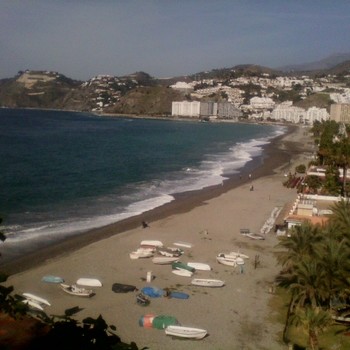Which of the following reaction does not take place?
#a)# #"Cu" + 2"HCl"("conc.") -> "CuCl"_2 + "H"_2#
#b)# #"Cu" + 2"H"_2"SO"_4 ("conc.") stackrel("heat ")(->) "CuSO"_4 + "SO"_2 + 2"H"_2"O"#
#c)# #3"Cu" + 8"HNO"_3("dil.") -> 3"Cu"("NO"_3)_2 + 2"NO" + 4"H"_2"O"#
#d)# #"Cu" + 2"AgNO"_3 -> "Cu"("NO"_3)_2 + 2"Ag"#
2 Answers
The answer is
Explanation:
Copper reacts with nitric acid and sulfuric acid. It reacts with cold,
dilute nitric acid, but it requires heat and concentrated sulfuric acid
to create a reaction. Copper does not react with most other acids.
The reaction between copper and nitric acid is a popular classroom
demonstration due to the visible production of nitrogen dioxide,
but proper safety precautions must be taken.
The nitrogen dioxide gas produced is toxic when inhaled, so the
experiment should be performed under a fume hood or the
nitrogen dioxide should be bubbled through water. Gloves and eye
protection are important due to the corrosive nature of nitric acid.
The silver nitrate is in solution and the metallic copper will dissolve
to form copper nitrate; as it does so, the silver in solution will be
precipitated out as metallic silver. That is, the silver in solution is
exchanged for copper and the copper that is not in solution is
substituted for silver
The answer is
Well, where is your standard reduction potential table? You should have that right in front of you...
...as I do here...
 )
)
- Half-reactions involving
#"HCl"# are the standard hydrogen electrode,#E_(r ed)^@ = "0 V"# . - Half-reactions involving
#"H"_2"SO"_4# are the sulfate reduction to#"SO"_2# and#"H"_2"O"# ,#E_(red)^@ = "0.20 V"# . - Half-reactions involving
#"HNO"_3# are the nitrate reduction to nitrogen monoxide,#E_(red)^@ = "0.96 V"# .
You know that the higher
Furthermore, notice how ALL of these are missing phases, so I've added them in...
By inspection,
#E_(red)^@ = "0.34 V"# for the copper reduction, so copper would rather be reduced compared to#"HCl"# ... this is nonspontaneous.
Now, clearly, this follows the same copper half-reaction, and
#"0.34 V" > "0.20 V"# , so copper would rather be reduced... but this is gotten over by the heating, so this is feasible... but not without heating.(Also note that the sulfate counterion in
#"CuSO"_4# is NOT the one that got reduced from#"H"_2"SO"_4# , so I didn't bother to give that sulfur an oxidation state. What would it be...?)
One can readily see that
#"0.96 V" > "0.34 V"# , so nitrate would certainly get reduced by copper... so this occurs. In fact, it occurs even though the nitric acid is as dilute as it would be in a real lab.(Also note that the nitrate counterions in
#"Cu"("NO"_3)_2# are NOT the one that got reduced from#"HNO"_3# , so I didn't bother to give that nitrogen an oxidation state. What would it be...?)
Silver reduction should be spotted as
#"0.80 V"# , which is larger than#"0.34 V"# , so silver would rather be reduced, which is happening. Hence, this reaction occurs.


